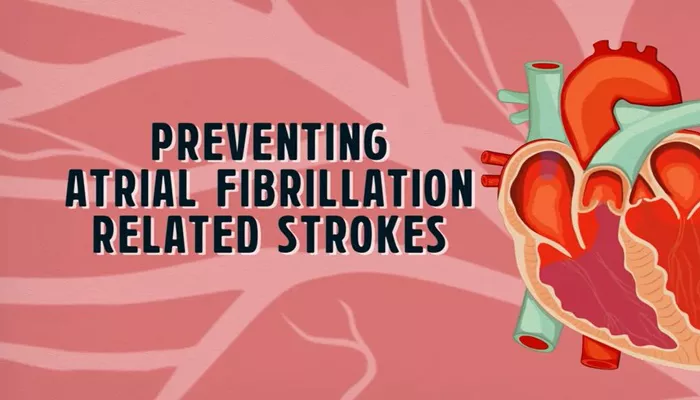Low blood pressure, also known as hypotension, is a frequent complication that can occur after a stroke. Understanding what causes low blood pressure after a stroke is critical for managing patient care and improving outcomes. Stroke affects the brain’s blood supply, and the resulting neurological damage can disrupt the normal regulation of blood pressure. This article explores the main causes, physiological mechanisms, and clinical implications of low blood pressure following a stroke.
Understanding Stroke and Its Impact on Blood Pressure Regulation
What Is a Stroke?
A stroke is a sudden interruption of blood flow to the brain, caused by either a blockage (ischemic stroke) or bleeding (hemorrhagic stroke). This interruption leads to brain cell death and neurological impairment.
Role of Blood Pressure in Stroke
Blood pressure is a key factor in stroke pathophysiology. Both high and low blood pressure can influence stroke outcomes.
High blood pressure is a known risk factor for stroke, but low blood pressure after a stroke can also complicate recovery by reducing cerebral perfusion.
Causes of Low Blood Pressure After Stroke
1. Autonomic Nervous System Dysfunction
The autonomic nervous system (ANS) controls involuntary bodily functions, including heart rate and vascular tone. Stroke can damage parts of the brain that regulate the ANS, such as the brainstem or hypothalamus, leading to impaired blood pressure control.
Impaired Sympathetic Activity: The sympathetic nervous system normally maintains vascular resistance. Stroke-related damage can reduce sympathetic outflow, causing blood vessels to dilate excessively and blood pressure to drop.
Parasympathetic Overactivity: An imbalance may cause increased parasympathetic tone, leading to bradycardia (slow heart rate) and hypotension.
2. Cardiac Complications Following Stroke
Stroke can affect the heart through neurogenic mechanisms or pre-existing cardiac conditions aggravated by the stroke.
Neurogenic Cardiac Injury: Acute stroke can lead to myocardial stunning or arrhythmias, which reduce cardiac output and cause low blood pressure.
Heart Failure: If heart pumping ability is compromised, systemic blood pressure may drop.
Arrhythmias: Abnormal heart rhythms can cause inefficient blood circulation and hypotension.
3. Dehydration and Volume Loss
Stroke patients often experience reduced oral intake or increased fluid loss, contributing to hypovolemia (low blood volume).
Poor Hydration: Difficulty swallowing or impaired consciousness may limit fluid intake.
Increased Fluid Loss: Fever, sweating, or use of diuretics can lead to volume depletion.
Effect on Blood Pressure: Reduced blood volume lowers venous return, cardiac output, and systemic blood pressure.
4. Medications Used After Stroke
Medications prescribed during or after stroke management can cause or worsen low blood pressure.
Antihypertensive Drugs: Blood pressure-lowering medications, while important for stroke prevention, can sometimes reduce blood pressure excessively.
Diuretics: Used to manage fluid overload but can lead to hypovolemia.
Other Medications: Some sedatives, analgesics, and cardiac drugs may depress cardiovascular function.
5. Neurogenic Shock
In some cases, especially with brainstem strokes, neurogenic shock may occur. This is a severe autonomic failure that causes systemic vasodilation and bradycardia, leading to profound hypotension.
Pathophysiology of Low Blood Pressure After Stroke
Brain Regions Involved in Blood Pressure Regulation
The hypothalamus, medulla oblongata, and insular cortex are key brain regions that regulate cardiovascular function. Damage to these areas disrupts normal reflexes that maintain blood pressure.
Impaired Baroreceptor Reflex
The baroreceptor reflex helps stabilize blood pressure by adjusting heart rate and vessel tone in response to changes in blood pressure. Stroke can impair this reflex, causing unstable or low blood pressure.
Cerebral Autoregulation Disturbance
Normally, cerebral blood vessels adjust their diameter to maintain consistent brain perfusion despite fluctuations in systemic blood pressure. After stroke, this autoregulation may fail, making brain perfusion dependent on systemic blood pressure. Low blood pressure can thus worsen ischemia.
Clinical Implications of Low Blood Pressure After Stroke
Risks of Hypotension
Low blood pressure after stroke may lead to:
Worsened Cerebral Ischemia: Inadequate brain perfusion can expand the area of brain injury.
Increased Risk of Secondary Brain Injury: Hypotension may exacerbate brain edema and metabolic disturbances.
Organ Hypoperfusion: Other organs, such as kidneys and heart, may also suffer from low blood flow.
Symptoms and Signs
Patients with hypotension after stroke may experience dizziness, weakness, confusion, syncope, or worsening neurological symptoms.
Diagnosis and Monitoring
Blood Pressure Measurement
Continuous monitoring of blood pressure is essential in stroke patients to detect hypotension early and manage it promptly.
Additional Diagnostic Tools
- Cardiac Monitoring: To detect arrhythmias or myocardial dysfunction
- Blood Tests: Assess hydration status, electrolytes, and cardiac markers
- Imaging: Brain imaging to assess stroke extent and possible brainstem involvement
Management of Low Blood Pressure After Stroke
Correcting Underlying Causes
Identifying and treating the cause of hypotension is crucial:
Hydration: Administer fluids to correct hypovolemia.
Adjust Medications: Review and modify blood pressure-lowering drugs.
Manage Cardiac Issues: Treat arrhythmias or heart failure promptly.
Address Autonomic Dysfunction: Supportive care may be required in severe neurogenic shock.
Supportive Measures
Positioning: Elevate legs or use Trendelenburg position to improve venous return.
Vasopressors: May be used in severe cases to maintain adequate blood pressure and organ perfusion.
Close Monitoring: Frequent reassessment to balance cerebral perfusion and avoid hypertension.
Prevention and Prognosis
Prevention Strategies
Early detection of stroke symptoms and prompt treatment reduce the risk of complications including hypotension. Maintaining adequate hydration and careful management of medications are preventive steps.
Prognosis
Low blood pressure after stroke, if unmanaged, can worsen neurological outcomes and increase mortality. Timely intervention improves prognosis.
Conclusion
Low blood pressure after stroke arises from a combination of autonomic nervous system dysfunction, cardiac complications, volume loss, medication effects, and neurogenic shock. Understanding these causes allows healthcare providers to better monitor and manage hypotension in stroke patients, aiming to protect brain function and improve recovery. Close clinical observation and individualized treatment are essential in minimizing the impact of low blood pressure on stroke outcomes.
Related topics:


